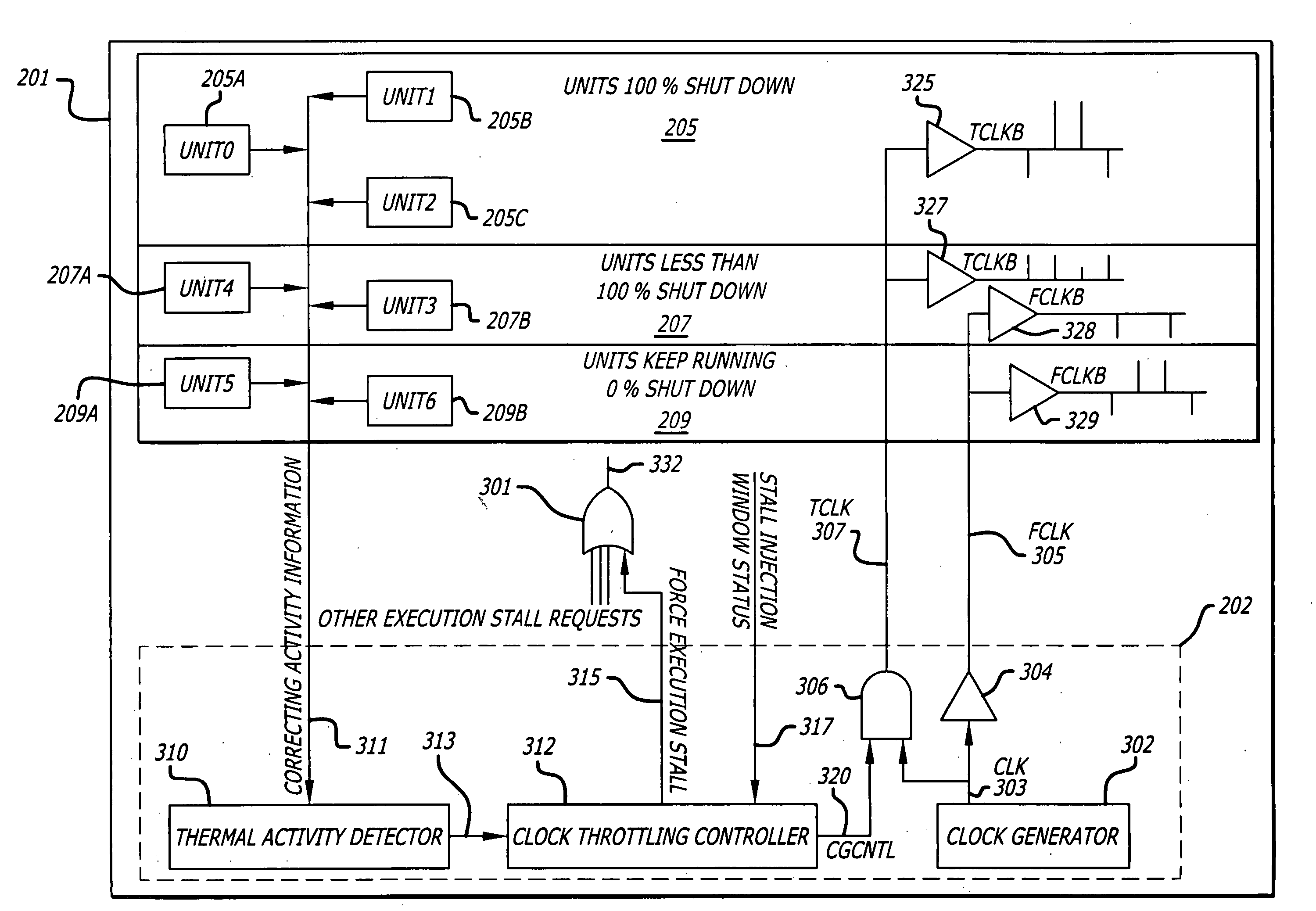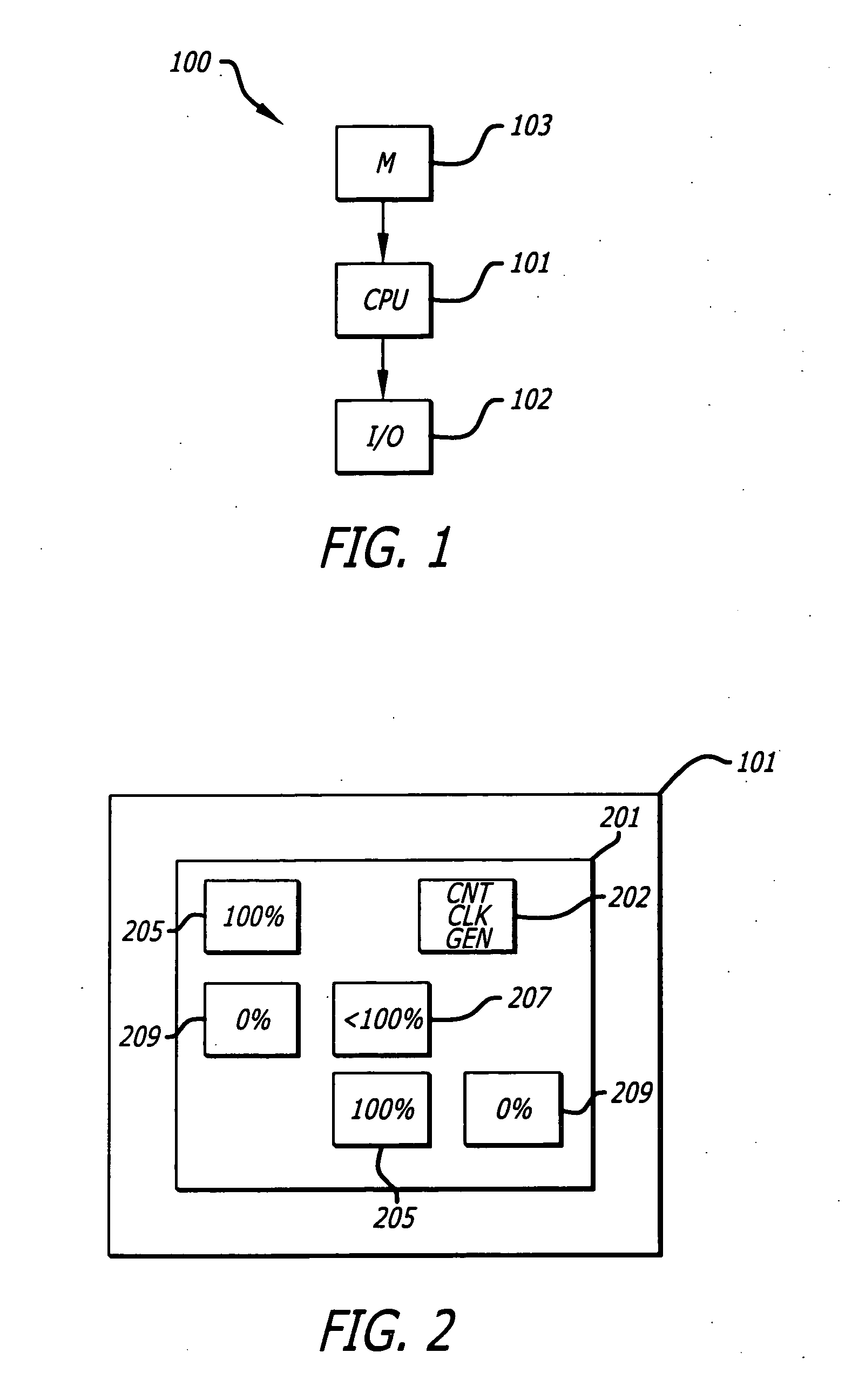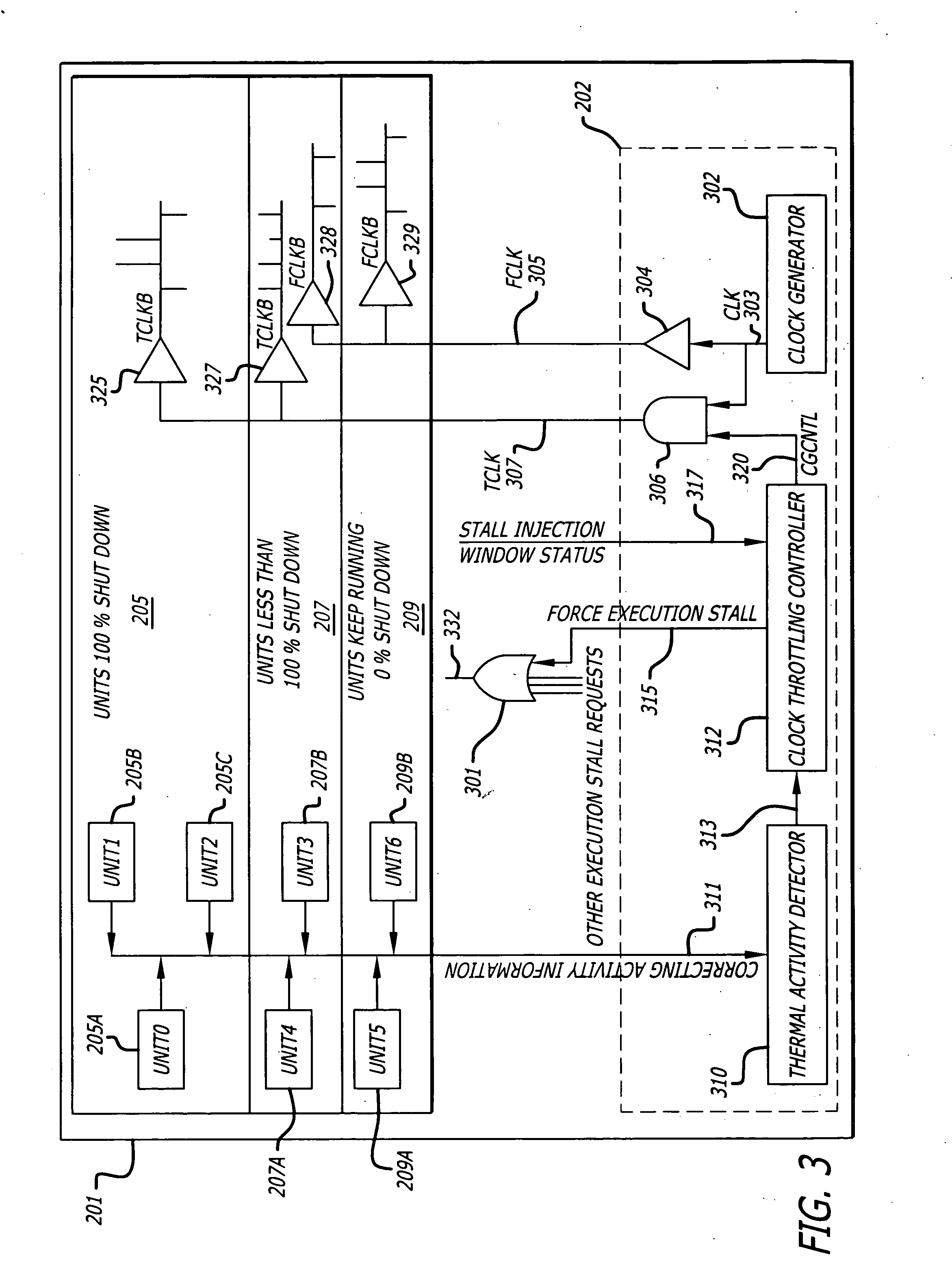Methods of clock throttling in an integrated circuit
a technology of integrated circuits and clocks, applied in the direction of liquid/fluent solid measurement, instruments, sustainable buildings, etc., can solve the problems of catastrophic failure requiring component replacement, not necessarily true instantaneously, and reducing performan
- Summary
- Abstract
- Description
- Claims
- Application Information
AI Technical Summary
Benefits of technology
Problems solved by technology
Method used
Image
Examples
Embodiment Construction
[0016] In the following detailed description of the present invention, numerous specific details are set forth in order to provide a thorough understanding of the present invention. However, it will be obvious to one skilled in the art that the present invention may be practiced without these specific details. In other instances well known methods, procedures, components, and circuits have not been described in detail so as not to unnecessarily obscure aspects of the present invention.
[0017] Thermal throttling allows a processor to cool down in trade for performance. The most common technique to thermally throttle a processor is to stop the internal clock. In some cases, suddenly stopping the internal clock to circuitry results in a di / dt variation where the current instantaneously spikes which can lead to even greater power consumption and thermal increases. Advanced chip process technologies using lower voltage supplies, dynamic circuit designs, and higher clock frequencies make ...
PUM
 Login to View More
Login to View More Abstract
Description
Claims
Application Information
 Login to View More
Login to View More - R&D
- Intellectual Property
- Life Sciences
- Materials
- Tech Scout
- Unparalleled Data Quality
- Higher Quality Content
- 60% Fewer Hallucinations
Browse by: Latest US Patents, China's latest patents, Technical Efficacy Thesaurus, Application Domain, Technology Topic, Popular Technical Reports.
© 2025 PatSnap. All rights reserved.Legal|Privacy policy|Modern Slavery Act Transparency Statement|Sitemap|About US| Contact US: help@patsnap.com



